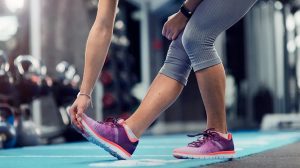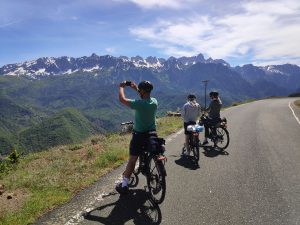Tired Legs Can be the Bane of a Cyclists’ Life
It is no secret that frequent long rides or high intensity circuits can leave one’s legs feeling wobbly and tight. Of course, stretching beforehand and after is usually the go to remedy for tiresome legs, but there are often underlying symptoms and signs of fatigue that are only exacerbated by stretching muscles.
With that in mind, we will be continuing our ‘training tips’ series by exploring some of the remedies to help alleviate some of those niggling sings of fatigue after riding.
Stretch More Consciously
It may be surprising to hear stretching does not always help. In fact, it can make the issue worse. That’s because a ‘tight’ leg muscle is not always what it appears to be, and frequent stretching is rarely the only solution.
What cyclists and athletes commonly feel as ‘tight’ are muscles that have knots or adhesions, otherwise known as trigger points.

Imagine your muscle is like a rope, and you tie a knot in it, the muscle will indeed stretch, but it will feel tight because the ends are fixed and there is increased tension as a result.
Therefore, stretching more consciously may be a way to help prevent this. For example, placing your foot up on a bench and rounding your back to reach your toes, is not in fact stretching the hamstring as much as one may think. Instead, you are increasing neural tension and stretching the sciatic nerve which runs down the underside of the leg. You should only feel the stretch in the targeted muscle, not the calves.
Release the Knots
Releasing the tension in knotted muscles will completely transform for the way your body moves and feels.
Obviously a sports massage is the best way to do this, but very few people have the time or money to do this on the regular. Enter your new best friend, the foam roller.
https://www.youtube.com/watch?v=cu6mq4TJnCM
You can pick one up for relatively cheap online, and they are a quick and easy way to remedy tension in the legs.
Rolling once or twice a day for just five minutes will leave you with significant results after about two weeks. Frequency, not intensity, is key and will break up the restriction, helping return the muscle to its natural resting position.
Range of Motion
This next tip is crucial for all muscle groups, but none more so than the legs.
Most of us live a relatively idle life at work, sat in a hunched position and then only stretching them while standing up straight. In an era defined by working from home, this is has become even worse.
Legs will get used to the position they spend the most time in, so incorporating range of motion exercises like lunges and squats can help to stretch every muscle in the legs and keep the muscles responding to rigorous exercise, helping to reduce fatigue in the long-term.






























